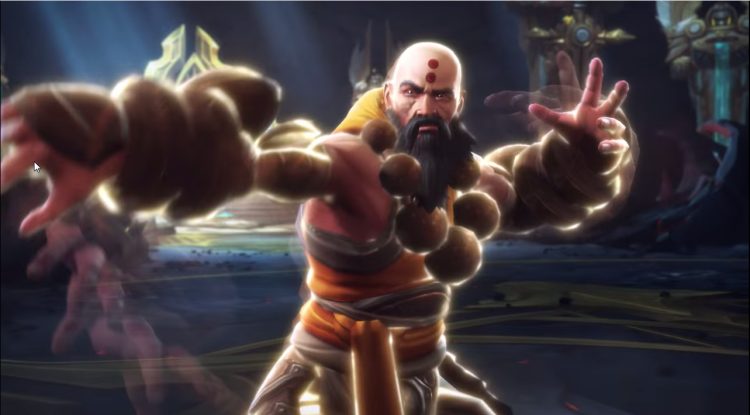Blizzard Entertainment has always been a company that values player feedback. Many of its recent games (like Diablo 3 or Starcraft 2’s Heart of the Swarm expansion) have shown that while it doesn’t always nail its big games upon release, it’s among the fastest learners in the industry. Such is the case with its newest game, Heroes of the Storm.
Yesterday at the Electronic Entertainment Expo’s first-ever PC Gaming Show, Blizzard announced two new heroes as part of the Eternal Conflict expansion for Heroes of the Storm. This new content aims to rectify some of the issues the game has had since its alpha phase: a lack of interesting, thematic maps that make use of Blizzard’s universes, and character roles that were a little too stringent.
The new map is interesting, but the new heroes caught most of my attention. While both King Leoric and the Monk are cool additions (who doesn’t want to play as the Skeleton King?), they also show that Blizzard wants to diversify the roles it’s codified in the game. King Leoric is most likely a Warrior, and the Monk is classified as a Support, but the subtle ways in which these heroes help their team make the roles they play less stringent and more adaptable than past heroes.
King Leoric
As one of the first bosses in both Diablo and Diablo III, you’d expect King Leoric to fill the role of a dedicated tank hero focused on team fighting. Both of his Heroic abilities work best when used in 5-on-5 team fights. Entomb specifically needs a team to work around it, since it deals no damage but can trap enemies in place. This makes it easier for allies to land spells that require some time to go off, like Malfurion’s Entangling Roots or Gazlowe’s Xplodium Charge. Leoric players must have their team nearby when they use the spell to maximize its effects.
But in Heroes of the Storm, some of the most powerful abilities are those that heroes start off with. For Leoric, it’s how he can walk around the map as a wraith after he dies. He can slow enemies to reduce his respawn timer, but to me its most important use is more tactical. If he gets vision in his wraith form (it’s not yet clear whether he does), he can scout the entire map safely while dead and see if the enemy is capturing objectives or mercenary creeps on the sly. And since he revives at the position of his wraith (something no other hero can do), he can help his team push or fight the second he revives or find an empty lane and push it while everyone thinks he’s still dead.
The Monk
The Monk seems to be a hero built for HotS’s Quick Match feature. The Monk’s special feature is that he can choose a trait at the start of the fight that will influence the way he plays, more so than other characters. Though he’s labeled as a support, this could mean he could change into a more damage or initiation-oriented hero, depending on the heroes on his and the enemy team.
This could make him one of the most adaptable heroes in the game, and Heroes of the Storm needs more of these. Since in Quick Match you pick your character before you see the enemy team, you’re counting on Blizzard to match you up with a diverse set of teammates encompassing all roles. This works well most of the time, but it can lead to frustrating games where most of the enemy team’s heroes counter yours, even if the roles on both teams are diverse. If the Monk’s traits are versatile enough that he can see an enemy lineup and pick a one that counters more enemy heroes, it will make him a great pick in Quick Match.
Both the Monk and Leoric should address things that Heroes of the Storm needs more of: a way for a team to gain a tactical advantage through scouting things other than map objectives and the ability to change your playstyle to adapt to the enemy heroes in Quick Match. If Blizzard does it right, it could release content themed not only around particular games, but play-styles as well, and their newest characters a step in the right direction.
VentureBeat's mission is to be a digital town square for technical decision-makers to gain knowledge about transformative enterprise technology and transact. Learn More

